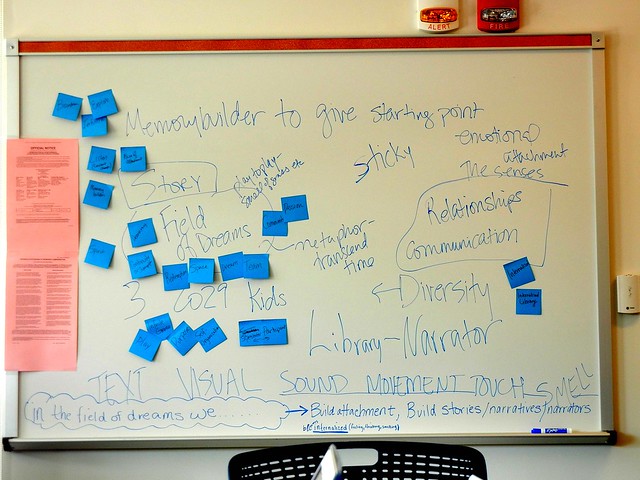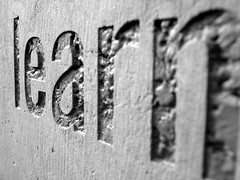Then I found out about EZproxy, which allows the students to log into all the databases with their regular school user name and password! Voila, I thought, problem solved! no more emails!
It turns out I created a problem that might just be a stumbling block in getting the students to use the databases.

image: confused arrows by massdistraction
When bookmarking the database articles (or saving/sharing the URL in diigo, google docs, Word, NoodleTools, etc), if you save the permalink, durable link, bookmark, or whatever the database calls the link to go back to for the saved article, the bookmarked web address doesn't have the right prefix to the url that would give the students access from home. So, they have to put a prefix on the URL to get back to the article. I am not sure how many of my students are running into this problem, but I see it could happen more and more with all the collaborative GoogleDoc work going on at my school.
Now, all my LibGuides have this information:
Often you will want to save a link to an article in GoogleDocs or bookmark an article to Diigo, Evernote, or another information organizer.You access our databases through EZproxy, which allows you to use your Brentwood School login. In order to save URLs or bookmarks for future use, please follow these instructions:
1. In the database look for a link called Bookmark or Permalink. If the database offers these types of permanent links, those are best to use. Otherwise copy and paste the URL (Gale and ProQuest have these special links to their pages. ABC Clio and SIRS do not).
2. When accessing your saved links from home, put the following in front of your link: http://library.bwscampus.com:2048/login?url=So, a link to an Encyclopedia Britannica article would look like this:http://library.bwscampus.com:2048/login?url=http://www.britannica.com/EBchecked/topic/364937/mariachi
3. If you are having trouble, try opening the database first, and then click on your saved link.
4. If you are still having trouble, contact Ms. Abarbanel for help.
Did I just create something even more complicated than teaching how to access the database passwords? Which is more complicated for 7-12 grades? And teaching the faculty how to link to an article is a whole other can of worms. I certainly can't teach it both ways. I have to pick a way and publicize it. Which is better? Do you use EZproxy? How do you deal with it? Am I missing something?



